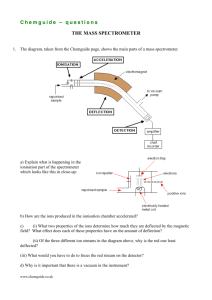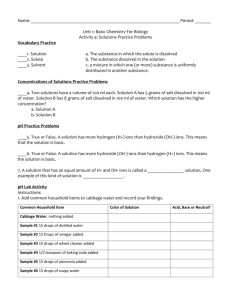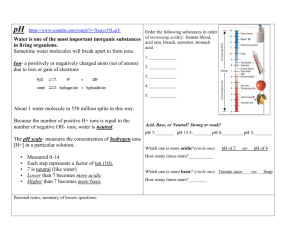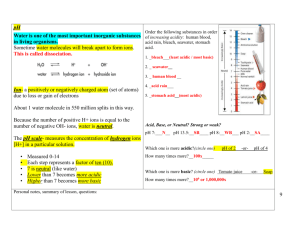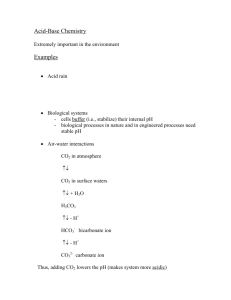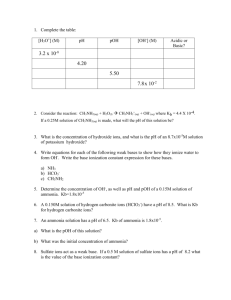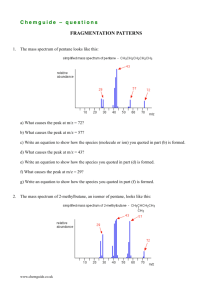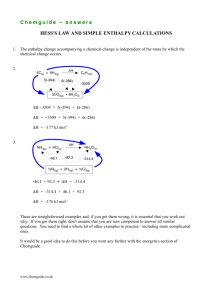Chemguide – answers STRONG AND WEAK BASES
advertisement
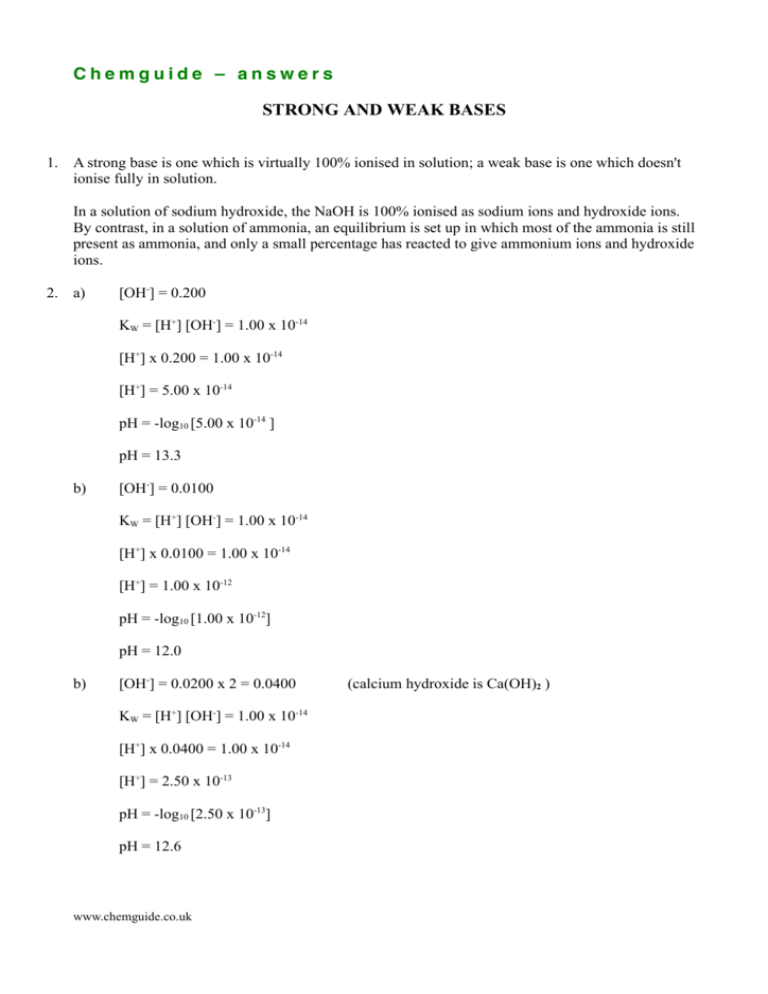
Chemguide – answers STRONG AND WEAK BASES 1. A strong base is one which is virtually 100% ionised in solution; a weak base is one which doesn't ionise fully in solution. In a solution of sodium hydroxide, the NaOH is 100% ionised as sodium ions and hydroxide ions. By contrast, in a solution of ammonia, an equilibrium is set up in which most of the ammonia is still present as ammonia, and only a small percentage has reacted to give ammonium ions and hydroxide ions. 2. a) [OH-] = 0.200 KW = [H+] [OH-] = 1.00 x 10-14 [H+] x 0.200 = 1.00 x 10-14 [H+] = 5.00 x 10-14 pH = -log10 [5.00 x 10-14 ] pH = 13.3 b) [OH-] = 0.0100 KW = [H+] [OH-] = 1.00 x 10-14 [H+] x 0.0100 = 1.00 x 10-14 [H+] = 1.00 x 10-12 pH = -log10 [1.00 x 10-12] pH = 12.0 b) [OH-] = 0.0200 x 2 = 0.0400 KW = [H+] [OH-] = 1.00 x 10-14 [H+] x 0.0400 = 1.00 x 10-14 [H+] = 2.50 x 10-13 pH = -log10 [2.50 x 10-13] pH = 12.6 www.chemguide.co.uk (calcium hydroxide is Ca(OH)2 ) Chemguide – answers 3. a) b) Kb = [NH4+] [OH-] [NH3] c) pKb = -log10 Kb d) Kb = 4.37 x 10-4 pKb = -log10 (4.37 x 10-4) pKb = 3.36 (If you are getting these questions wrong, the most likely mistake is in entering numbers like 4.37 x 10-4 wrongly on your calculator. The most common way would be to enter 4.37, then press EXP, then 4, then +/-, but check your calculator instruction book. You mustn't enter the number 10 and then press the EXP button.) e) B is the stronger base because its Kb value is the greater. f) D is the stronger base because it has a lower pKb value. Important: These questions only cover the material on the Chemguide page, but that isn't enough. Check your syllabus and past papers to see what you need to be able to do, and then practise doing a lot of examples. www.chemguide.co.uk
